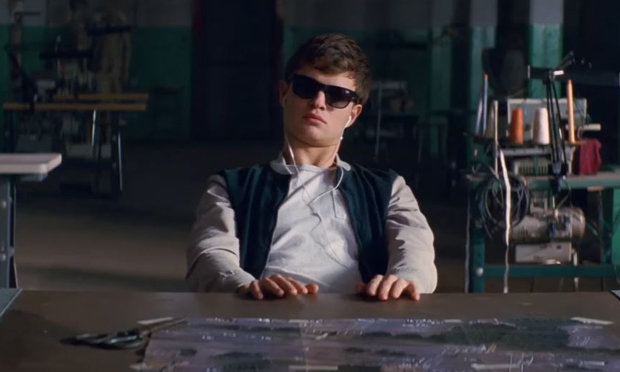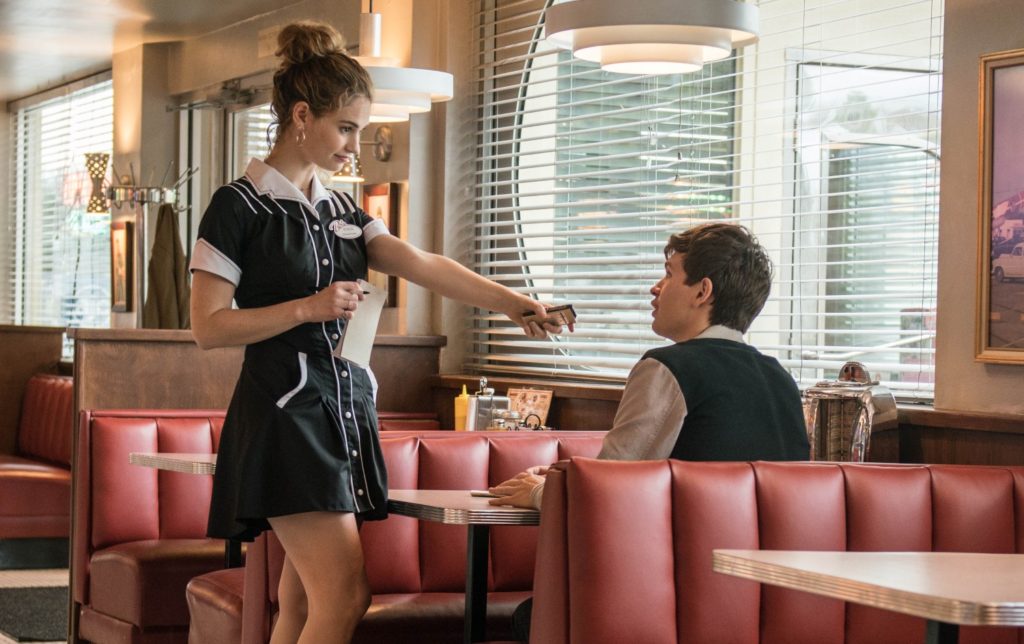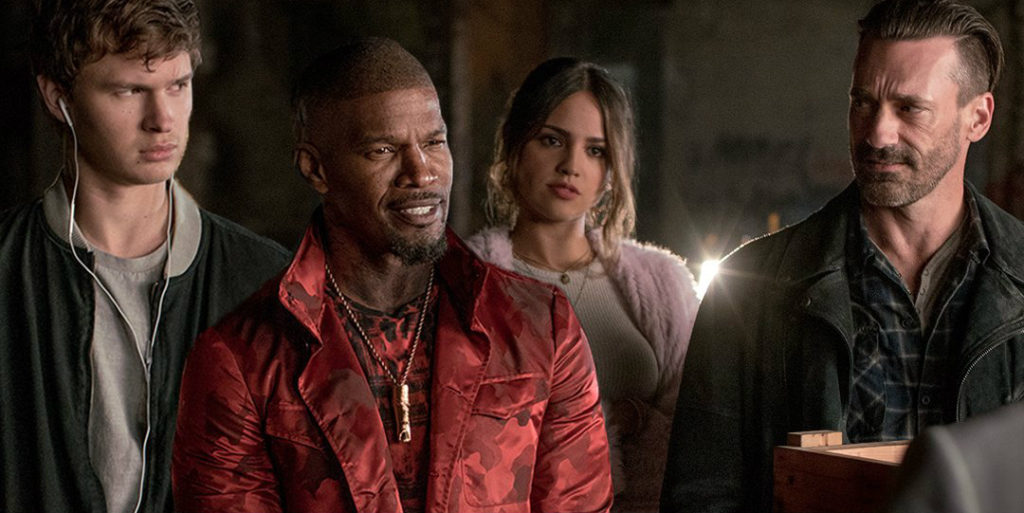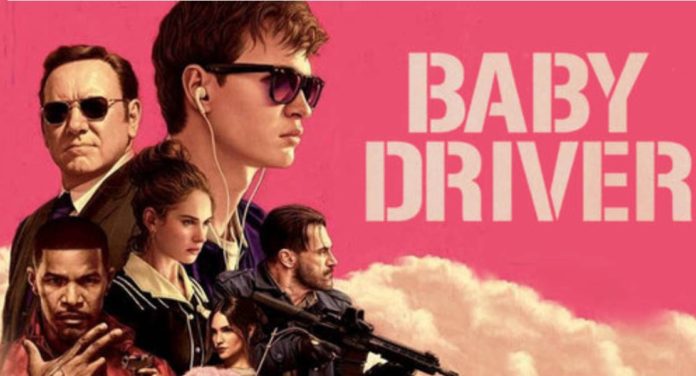The most underrated and overlooked director in the film business might just be Edgar Wright. With a history of making extremely enjoyable movies seen by a relatively small audience, Wright has a reputation of writing and directing films that develop cult followings.
His newest film, “Baby Driver,” seeks to be his first film that finally becomes as great a commercial success as it is a critical success.
With a larger budget, an American setting and a cast combining Hollywood’s most respected and up-and-coming acting talent, “Baby Driver” presents Wright’s best shot at finally having one of his films seen by a wider audience than his traditional niche pop-culture-convention-attending fan base.
Even with all of the new elements Edgar Wright works into this film (budget, setting, and cast), the only way the film has a chance at being viewed widely is if the story at its center is good. As we’ve seen with the unimpressive box office returns for 2017 films like “Transformers: The Last Knight,” “Pirates of the Caribbean: Dead Men Tell No Tales” and “Fifty Shades Darker,” if the story of the film isn’t any good, people won’t spend their money.
In 2017 it seems North American audiences have gotten savvy to Hollywood and are refusing to spend money on films with bad stories — even if they are traditionally Hollywood blockbuster franchises — and are looking to spend their money on films that care as much about their stories as they do on their box office receipts.
“Baby Driver” doesn’t suffer from the same issues as the films listed above because it delivers a wholly unique viewing experience, from its editing and use of music and sound design to its story.
The story of “Baby Driver” is about the main character, Baby (Ansel Elgort), a getaway driver forced into the role due to a mistake he made when he was a child. He constantly listens to music to drown out the permanent tinnitus he incurred as a result of a childhood accident. The man who forces him to drive is Doc (Kevin Spacey), a well-connected kingpin who assembles the various heist teams that Baby must escort to and away from crime scenes.

After performing his last job for Doc, Baby meets Debora (Lily James), a waitress at a local diner, and they fall for each other. With his life seemingly now on the right track, Baby is forced back into the heist business by Doc, and from there “Baby Driver” becomes less of a formulaic heist/gangster film and becomes a wild and distinct story about action and consequence.
What makes Edgar Wright films so special is that he tells seemingly conventional stories through unconventional means, yet by the end of the film the story results in anything but convention or cliche.
I’m not one to enter into spoiler territory, but suffice it to say that the story and the characters behave in a way you’d expect them to until the third act, when many surprises emerge and play with the audience’s sense of what will and won’t happen.
Speaking of the characters, there is a wide array of them, and all of them feel fully realized regardless of screen time. Some characters are on screen for about five minutes, but they feel distinct and purposefully placed. Every character has a role to play, and no time seems to be wasted on any one character. As this is a film about heists, most of these characters are bad people, but they all have their character quirks that make them endearing.
Buddy (Jon Hamm) and Darling (Eiza Gonzalez) are the two characters who have the best chemistry in the film. They are two members of the heist crew, but they have an underlying background and subtext to them that made me want to know more about them by film’s end. Together they operated with an interesting moral code and showed a type of compassion for Baby that I wasn’t really expecting going into the film.
Ansel Elgort and Lily James as Baby and Debora also work really well together in this film. The acting in scenes were both actors were present gave the film a nice break from the action that was taking place throughout the rest of the film.
Elgort’s performance as Baby was the best performance of the film, in a film full of great performances. Baby is a character of few words. Most of his characterization and development comes through physical action and nuanced movement, and Elgort was masterful at bringing that performance to life.

Visual composition of “Baby Driver” is incredibly well conceived. It takes modern action cinematography with a 1950’s aesthetic. The story takes place in the modern day, but Edgar Wright uses his post-World War II artistic vision to give the audience a subtle throwback of nostalgia. This comes in the form of the diner, specific cars used in the film and any scene involving Baby and Debora.
Now what really made this film great was the use of music. The whole film is essentially timed to the music Baby is listening to. From the opening credits to the last scene of the film, everything moves to Baby’s beat. This has to be an incredibly daunting task to act, film and edit, but Edgar Wright and his cast pulled it off flawlessly.
The car chases, gun fire, reloads, and physical action scenes are all tied to the current song playing through Baby’s ear buds. I can’t stress how impressive this all is. It really is something you have to experience yourself to fully understand.
That said, I was astonished at how well it all worked out. Editing a scene to a song or orchestral beat can be risky as it can feel forced or sloppy, and while the purpose of the music and action in “Baby Driver” is intended to be wholly symbiotic, it always feels natural and flows perfectly.
The stunt driving in the film is also great. The trailers for the film display some of the really inventive driving sequences, but plenty more take place within the film. The driving/action scenes are themselves enough to sell the film, let alone how Wright was able to time them to the specific songs. It goes without saying, really, that the editing in “Baby Driver” was nothing short of great.

I only had one negative criticism of the film: I don’t believe Baby and Debora had enough scenes together in the film to really sell them on the type of relationship they have. I felt like maybe five or so more minutes could have been given to the two characters together in order to further sell them as a couple in love.
That’s fairly nitpicky, I’ll admit, but it was something that I thought by film’s end.
All of that said, “Baby Driver” is one of my favorite films of the year. Its inventive use of sound and editing, strong and distinct characters, thrilling action sequences, combined with Edgar Wrights artistic and directorial vision, gives “Baby Driver” a sense of heart and unique distinction that many summer films often lack today.
I give “Baby Driver” 9.5 / 10
















